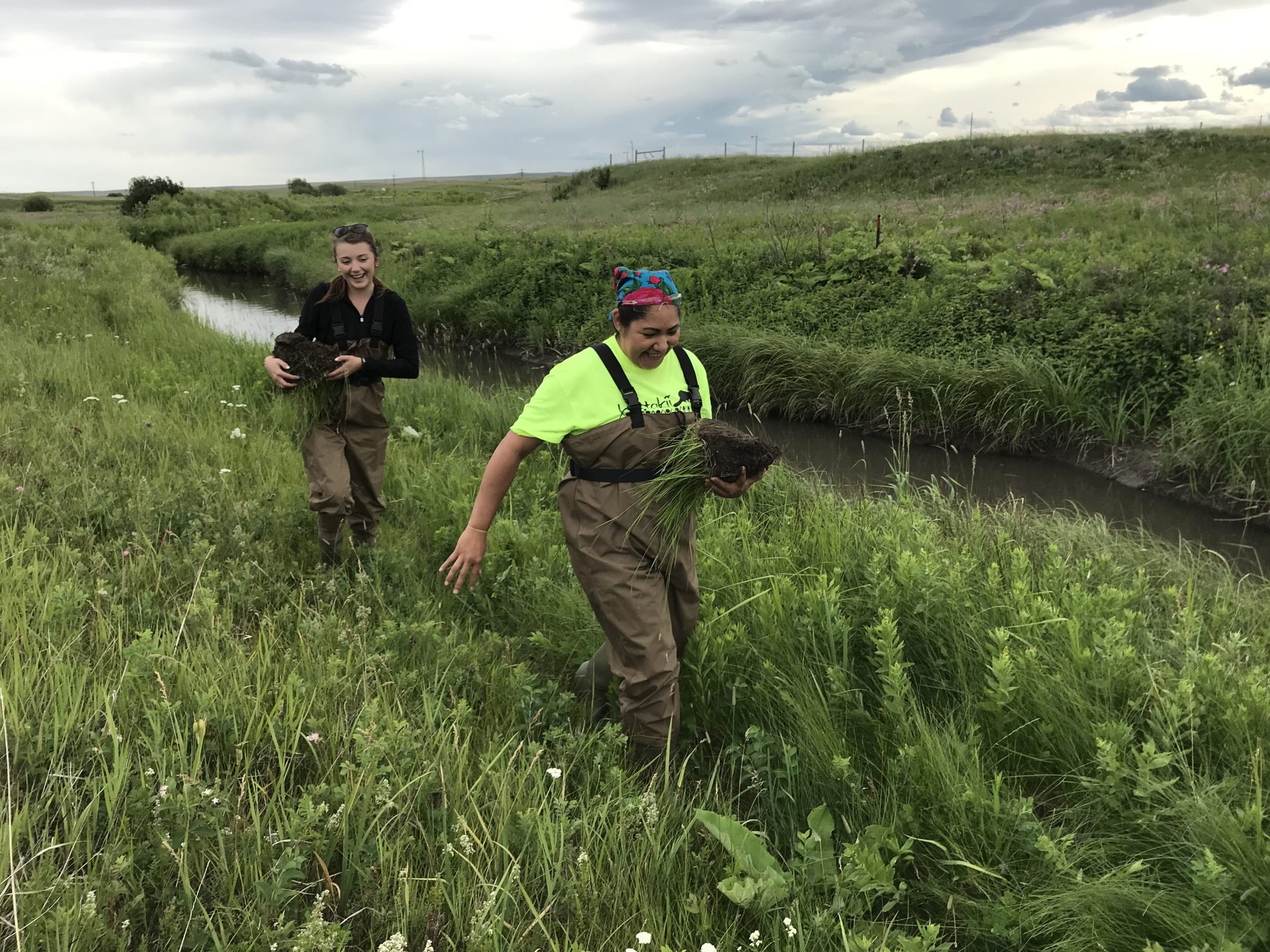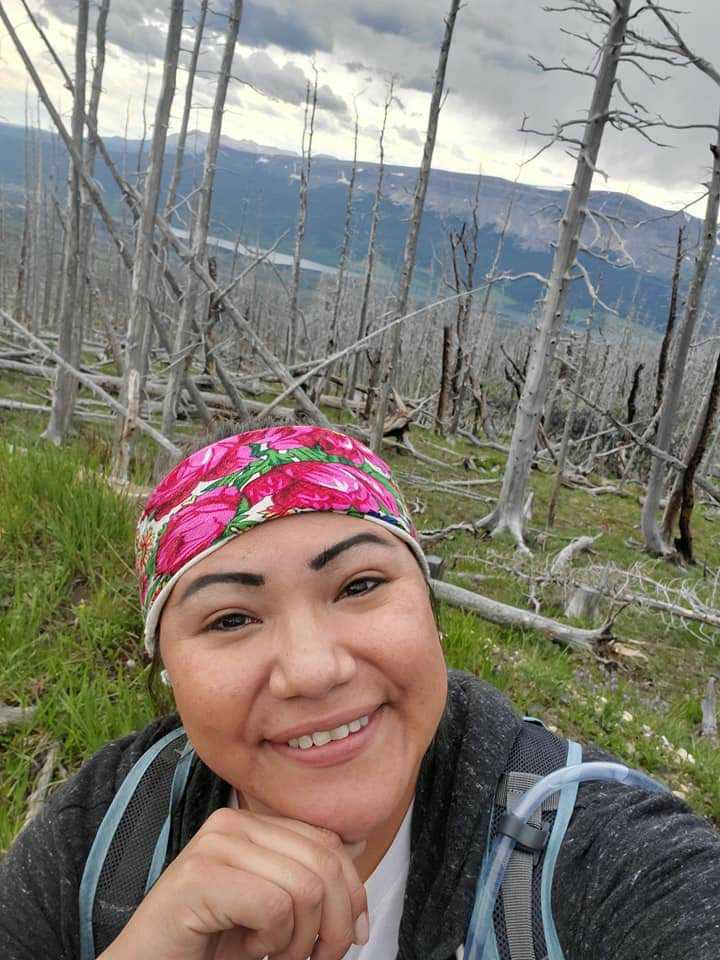Here at the Center, we wish to express our gratitude for the many contributions Indigenous people have made to sustaining biodiversity, reversing habitat fragmentation, and resisting environmental injustice.
In celebration of Native American Heritage Month, each Monday in November we will be sharing stories from four Indigenous conservation practitioners.
These conversations offer an opportunity to hear from Indigenous conservationists about their experiences, their path to working in conservation, and their visions for a future that honors Indigenous peoples and achieves collective conservation goals.
We hope you enjoy these stories.
In our second installment of our Native American Heritage Month Partner Spotlight series, we sat down with Termaine Edmo, the Climate Change Coordinator for the Blackfeet Tribe, to discuss her journey to climate resilience work and her goals for the Blackfeet Nation.
The Importance of Roots
When asked what brought her to the field of water quality and climate adaptation, Termaine noted that it all began with a gardening club.
“In 2016, I was working with Blackfeet Community College (BCC) and started the gardening club. I wanted to create a space to incorporate traditional knowledge into food security. I was studying Addiction Studies and Social Work and wanted to create a space for students to find their own identity. Specifically, [to provide opportunity to] vulnerable students who struggled with addiction, poverty, and crises at home. To find out who they were, their background, and give them a sense of belonging.”
Identity informs every aspect of Termaine’s work. By celebrating her Amskapi Piikani (Blackfeet) identity and helping others to connect with theirs in her role as a Cultural Youth Mentor, Termaine embodies the legacy and resilience of Indigenous communities. She commented on this importance.
“When you have that sense of belonging, you really find out who you are and that’s part of being Native American- knowing who you are and knowing how to deal with your surroundings and how to adapt.”
-Termaine Edmo
In 2017, she participated in the Climate Change Warriors Internship Program. Gerald Wagner, the Director of the Blackfeet Environmental Office, developed this successful program, creating opportunities for individuals like Termaine to develop their skillsets and participate in climate adaptation research efforts. Each intern tackled a section of the Blackfeet Climate Adaptation Plan for their project. Termaine explored the impacts of climate change on water quality. She presented her research at the Northwest Climate Change Summit where Nikki Cooley, the head of the Institute for Tribal Environmental Professionals, recognized her potential and wanted to see the climate adaptation work grow.
“We came back the second year and mentored the new group of interns. The [Climate] Adaptation Plan really started coming together. It was really quick.” She noted. When she graduated from Blackfeet Community College, Wagner offered her a full-time position to continue her work with the Blackfeet Environmental Office.
During her time at Blackfeet Environmental, her skillset continued to grow. “I started learning all the ins and outs of being a water tech. I help them tremendously. Last spring, we only had two [water techs] so I really got to help out. We had to do the fish shocking and I got to get my feet on the ground. I really enjoyed the field work. That gave me the experience to do the Beaver Project. That was one of our main projects.”
Ksik Stakii Project
The Ksik Stakii (Beaver) Project was a two-year collaborative effort between the Center, Blackfeet Environmental, and Blackfeet Community College. This project utilized a beaver mimicry restoration technique that involved building beaver dam analogs to “create floodplains that improve water quality, enhance habitat for birds, and reduce the risk of flood damage to man-made structures” (Blackfeet Climate Change).

For two summers, community members gathered to cut willows, dig sod, and hammer logs, all in an effort to connect with the environment and steward floodplains.
In addition to the climate resilience benefits of the Ksik Stakii Project, Termaine expressed the community importance it played.
“The Ksik Stakii Project opened the doors to community members and students who didn’t have a sense of how we are as indigenous people, how we value and hold the earth and the surroundings above us.
The earth provides for us and we’re just the keepers.”
Like many others, Termaine is dealing with the effects the COVID-19 pandemic is having on her work. The Blackfeet Environmental Office is at a standstill. The Blackfeet Reservation was under strict quarantine and Termaine has been working from home rather than in the field, taking advantage of this pause to explore new funding opportunities and avenues. She is anxious to get back to work and implement more projects across the reservation (Although working from home has its exciting moments too—during this conversation, her daughter announced across the kitchen that she lost a tooth!).
A Blackfeet Legacy

When asked about her goals and the legacy she hopes to leave, Termaine commented on the ecosystem health of the Blackfeet Nation.
“I see water quality for the whole reservation. I see us sustaining our water, sustaining our recreational life, sustaining our Soyiitapi- the water beings, the spirits are valued and are part of us. [My goal is] for us to modernize traditional knowledge.”
Termaine captured the power of Indigenous resilience, stating:
“We are always going to be here. As long as the land stands here, the waters are flowing, the glaciers are melting, our language is going to be here, our culture is going to be here, and us as people will be here. We are place based people and this is our identity. This little chunk of Montana is who we are as Blackfeet People, Amskapi Piikani. I want my kids to be able to carry on the work.”
Telling Stories as We Would
Termaine has worked with several outside partners and provided her sage advice for those that would like to partner with Tribes.
“[It’s important that partners] don’t just want to write about who we are but want to get to know us as people. [We want someone] to tell our story the way we tell it. Build that relationship, build that trust, and gain that partnership.”
-Termaine Edmo
Trust is the foundation of Tribal relationships. Termaine noted that several partners have experienced Blackfeet ceremonies and described the magnitude of trust that preceded those invitations.
“Having partners experience our ceremonies is huge. [Ceremonies] are monumental for us and these things only happen once a year and for us that is a big sign of trust. To gain that trust is to have us as a friend and a partner and we’re always going to be there and keep on providing.”
Keep Exploring
Termaine advised anyone who is interested in climate adaptation and the Blackfeet Tribe to visit blackfeetclimagechange.com as well as blackfeetnation.com. The Blackfeet Climate Change Adaptation Plan highlights who the Blackfeet people are, their values, their way of life, and the traditional knowledge they carry.



